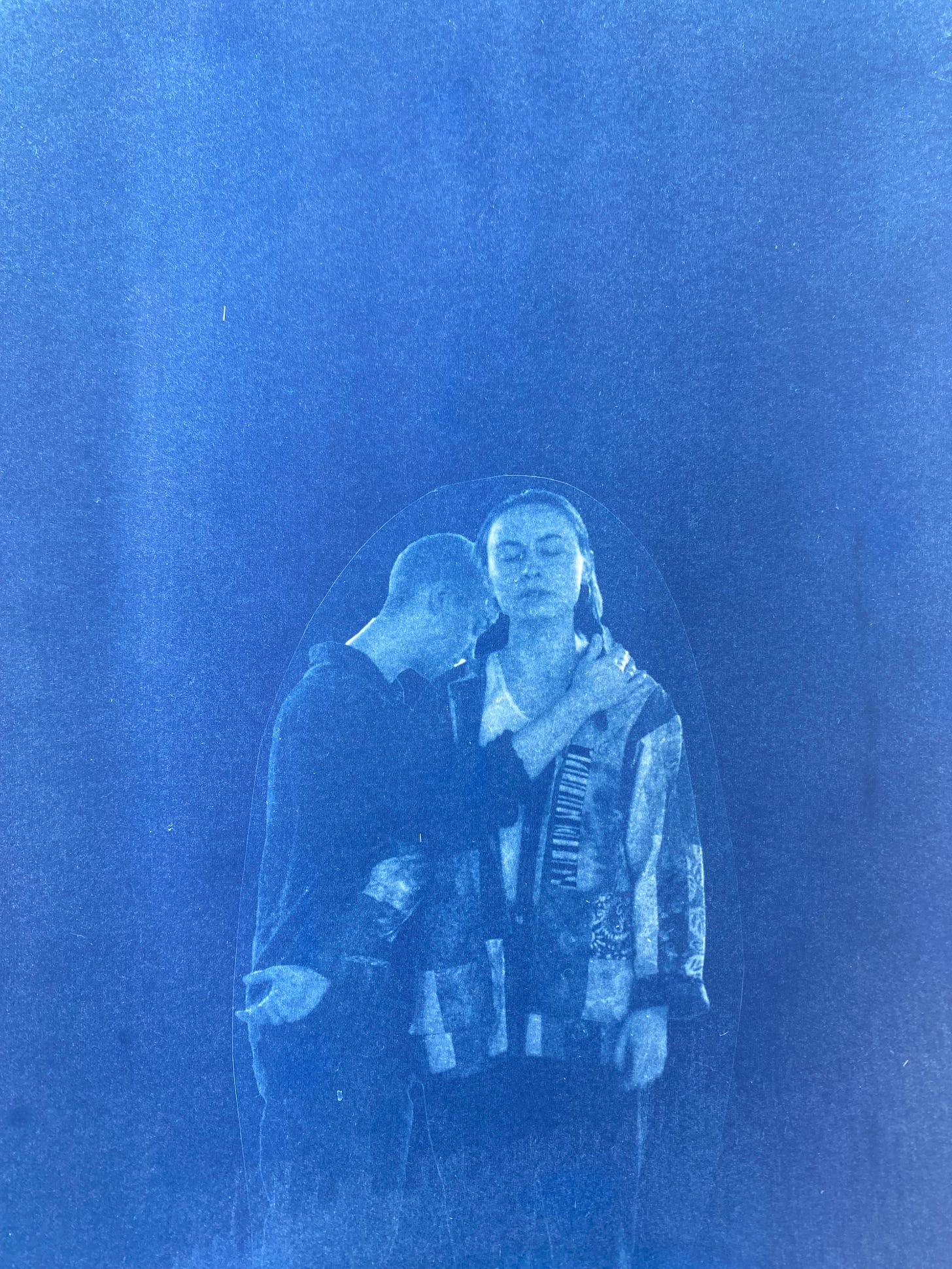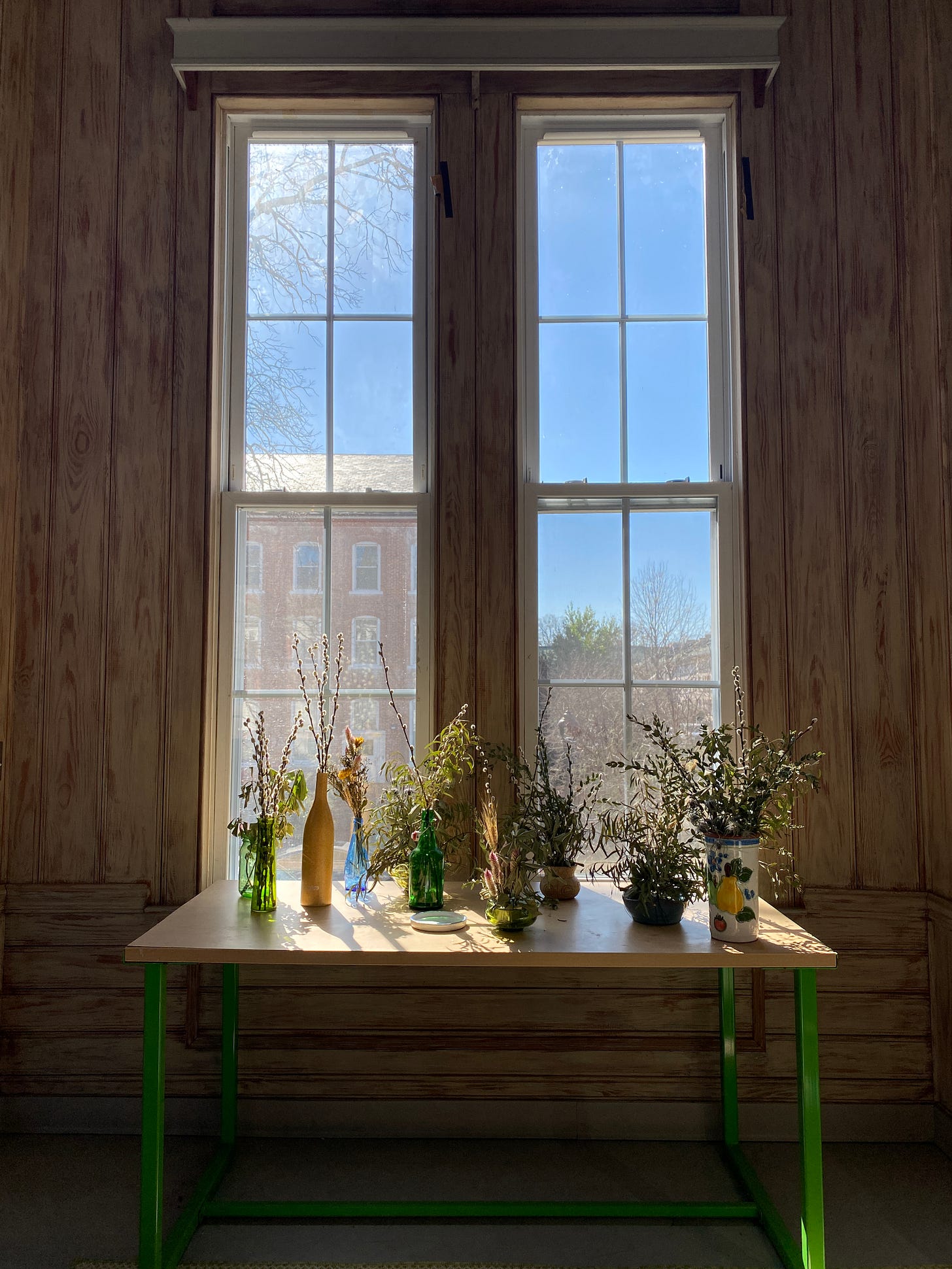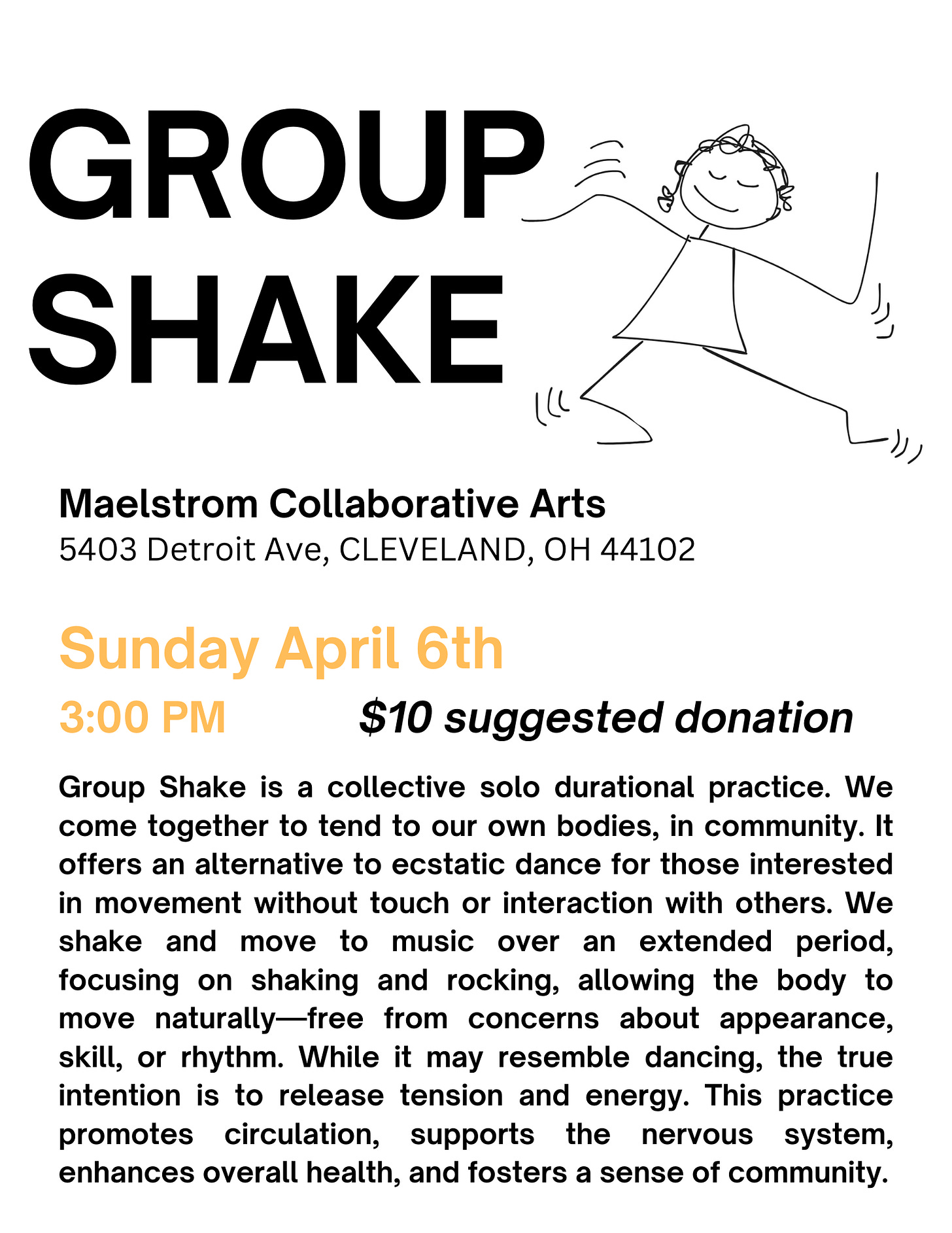hello there, friend.
I have been out of my monthly rhythm of writing here in deep shift. But, boy have I been writing. For those who have been following along, you may know I’ve been in a graduate program the past year and a half, working on an interdisciplinary dance MFA. In a few weeks, I’ll be graduating, so I’ve been crossing through some big milestones— one of them being my thesis project Thresholding.
It’s been a dense chapter—winding, weird, disorienting, expansive—in ways I may elaborate on in the future as I have more time to absorb and reflect. Times are uncertain (stressful, bizarre, violent)— I feel the economic precarity of the moment as I soon get kicked from the cozy (expensive) nest of higher-ed and launch myself into the job market. Amidst familiar feelings of dread, I also feel a deep sense of clarity on my commitments. Dance, embodiment, improvisation, collective song and ritual practices being a few of them. While I could wax on some big critiques of institutional education, overall I am fired up about committing to art and ritual in this hellish late capitalist landscape.
I want to offer a glimpse into the early seeds of Thresholding and pull back the curtain on what creative research can look/sound/feel like. Below is an edited excerpt from the beginning of my thesis writing. It offers some background on my experience with Threshold Singing, a contemporary non-religious practice of singing to folks on the threshold of life and death, and how/why I integrated it into my creative movement practice.
I’ll be sharing more photos from our process and performance, and I am crafting a listening experience of Thresholding which I am excited to share with you into in the coming weeks. For now, an introduction, I have to start somewhere. It’s a deep dive… and I want to invite you into this river I’ve been swimming in.

At a threshold
In a small, two-occupancy room at a local nursing home, I am rocking back and forth, weight shifting between my feet, right and left, right and left, keeping me in the room, attuned to my own body sensation and present with the elder I and a fellow Threshold Singer are accompanying. Gospel music plays on a radio in the corner. We try to sing over it until a nurse comes by to turn it down. Preacher’s wife, the nurse mentions. We lean in closer, each of us on either side of her bed, surrounding her with song. Sensing agitation and stress, we change songs. In breath, out breath, in breath, out breath, we sing. Slow, slower... we match her labored breathing. She is unable to speak, but her body tells us that she can hear us. She listens as we listen to her body. Her breath changes, tears gather at the corner of her eyes, her feet and hands shift and reach. We move in a bit closer, singing steadily, softly. We are with you, your life and death matter, I think to myself, about this woman I’ve just met. Just as we bring our singing to a close, her son arrives to be with her.
A threshold is often described as an in-between or liminal space, a crossing from one place to the next. Entering a threshold will take us somewhere, but the destination may not be entirely known. In terms of space, a threshold can be thought of as a simple boundary, like the threshold of a doorway. In scientific terms, a threshold may refer to a boiling point, or another measurement such as pressure or volume that marks a significant change of state.
change
movement
pressure
mysteryDeath may be the ultimate or most mysterious of thresholds, with varying beliefs about where death takes us—back to the soil we come from, onwards to heaven or hell, through a bardo, into the spirit world, or onto another life here on Earth. It’s this mystery that has led to many rituals and myths, across culture and time, that have helped people prepare for death, honor those who have crossed over, and ultimately create meaning through the anxious anticipation of death and the profound pain it creates for people left in its wake.
In the encounter described above, a fellow singer and I are offering a form of palliative care called Threshold Singing, a contemporary non-religious practice of singing to people who are sick and dying.1 Our song and embodied presence contribute to a thick network of care at the bedside of a women who would die a week later—music plays in the background, a nurse remains nearby to respond to her needs, a family member arrives to be with her. It’s in this thick space of song and care, this practice of getting so “close to the bone” of death and grief, where my inquiry as a movement artist and researcher begins.2
My project started from a curiosity about Threshold Singing as a type of palliative care and what it offers to people on the threshold of life and death through song, proximity, haptic movement, and embodied listening. What emerged as another point of focus is what this embodied practice has given to me as a person who is not actively dying but navigating the twists, turns, and losses of living. At the time I was introduced to Threshold Singing, I had recently lost three people close to me, so I started to consider how this practice might be supportive to broader experiences of grief.
Alongside an intergenerational ensemble of singers and movement artists, I started to explore the embodiment of Threshold Singing through a creative movement process. Working with repetitive singing, contact improvisation, and embodied listening, our movement research led the development of Thresholding, a socially engaged performance practice rooted in care ethics. One of my convictions with Thresholding is that being with our grief together in an embodied way—through song, proximity, and touch—is an act of care and a practice of mutuality.3 Thresholding is a practice of refusal to dominant cultures in the U.S. and beyond that want to smooth over the reality of death and grief that have marked the first quarter of the 21st century such as the COVID-19 pandemic and compounding climate crises that impact more people and landscapes each year.
When I started my graduate program, I didn’t know I was going to work with Threshold Singing or so closely with grief. I had some gut feelings, I was drawn towards working with compost and decay, I had glimpses of an intergenerational ensemble. But I was in the dark for a bit and quite scared and unsure for awhile. Thresholding emerged from little sparks and tears, and quite significantly from a collective of people who rooted me on, asked questions, shared their knowledge and hearts, and joined me in my inquiry. While I’ve been swimming so deeply in this work, myself two years ago had no idea I’d be here, no idea what Thresholding is. I am in awe of this. I am in awe of creative process, of making something, of forming bodies, voices, and energy into a constellation that didn’t yet exist. I looking forward to sharing more with you.
thanks for reading and being here.
For those in Durham NC or Cleveland OH, below are a couple opportunity to move together in person!
Cleveland Group Shake - APRIL 6th 3PM at Maelstrom Collaborative Arts
COMMUNITY WORKSHOP Engaging touch as a more of creative care
Wednesday April 23rd 5:15pm at the Duke School of Medicine More details here
We communicate so much through physical touch. From the smallest gestures with strangers to a lingering embrace with a loved one, touch can be a way of connecting with, communicating to, and caring for others. This workshop will be a playful exploration of touch as a creative mode of care. You will be invited to partake in simple embodiment practices that will support listening with the whole body. Together, we will practice navigating consent verbally and nonverbally through partner and group exercises. Open to all. No prior experience necessary.
I am really looking forward to sharing this workshop in collaboration with Duke Arts!
Threshold Singing was started by a group of women in California in the late 90s. Today there are a couple hundred choirs around the world. There’s a non-profit that maintains a repertoire of songs and offers education about threshold singing. You can learn more on their website.
I borrow this phrase “close to the bone” from Black feminist scholar Jennifer Nash in her recent book How we write now: Living with Black Feminist Theory. In embarking on a project on grief and death, I am indebted to lineages of Black feminists— scholars, artists, activists, and healers— who have worked tirelessly to name and be with grief and death in the face of racism and state violence.
Many practitioners have shaped these commitments through their generous work and offerings on grief — to name a few: Mara at Motherwort & Rose, Alexis Pauline Gumbs and her book Undrowned, & Perdita Finn and her book Take back the Magic.





